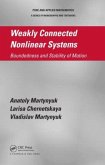A ubiquitous tool in mathematical biology and chemical engineering, the chemostat often produces instabilities that pose safety hazards and adversely affect the optimization of bioreactive systems. Singularity theory and bifurcation diagrams together offer a useful framework for addressing these issues. Based on the authors' extensive work in this field, Dynamics of the Chemostat: A Bifurcation Theory Approach explores the use of bifurcation theory to analyze the static and dynamic behavior of the chemostat. Introduction The authors first survey the major work that has been carried out on the stability of continuous bioreactors. They next present the modeling approaches used for bioreactive systems, the different kinetic expressions for growth rates, and tools, such as multiplicity, bifurcation, and singularity theory, for analyzing nonlinear systems. Application The text moves on to the static and dynamic behavior of the basic unstructured model of the chemostat for constant and variable yield coefficients as well as in the presence of wall attachment. It then covers the dynamics of interacting species, including pure and simple microbial competition, biodegradation of mixed substrates, dynamics of plasmid-bearing and plasmid-free recombinant cultures, and dynamics of predator-prey interactions. The authors also examine dynamics of the chemostat with product formation for various growth models, provide examples of bifurcation theory for studying the operability and dynamics of continuous bioreactor models, and apply elementary concepts of bifurcation theory to analyze the dynamics of a periodically forced bioreactor. Using singularity theory and bifurcation techniques, this book presents a cohesive mathematical framework for analyzing and modeling the macro- and microscopic interactions occurring in chemostats. The text includes models that describe the intracellular and operating elements of the bioreactive system. It also explains the mathematical theory behind the models.
Hinweis: Dieser Artikel kann nur an eine deutsche Lieferadresse ausgeliefert werden.
Hinweis: Dieser Artikel kann nur an eine deutsche Lieferadresse ausgeliefert werden.








